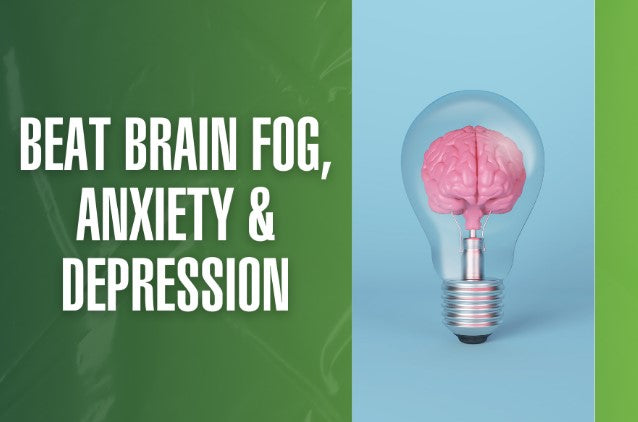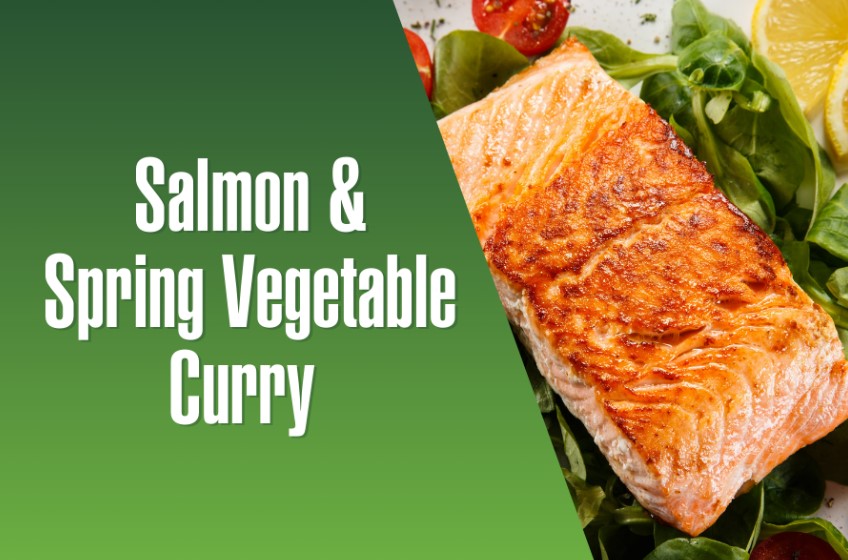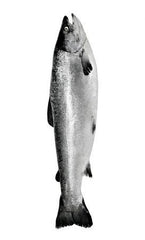 If there’s one food out there today that comes with a million misconceptions, it’s fish.
If there’s one food out there today that comes with a million misconceptions, it’s fish.
Today, I want to clear up the confusion and let you know which fish is good for you, which fish is bad for you, and how you can stay away from mercury, which is a neurotoxin found in many fish that you need to avoid like the plague.
Let’s get started with common myths about fish.
Myth 1: Fish is great for your health.
Like so many myths, there’s a grain of truth in this, but unfortunately, that’s where it ends.
Yes, SOME fish are good for you. In fact, when I eat animal protein, it’s almost always fish. (As you probably remember, I typically minimize the amount of animal protein I eat in an effort to keep my body in a healthy, alkaline state.)
However, I stick to a few types of fish that are the most alkaline and low in mercury:
-
Pacific or Alaskan wild-caught salmon
-
Sardines
-
Wild-caught trout
Those are my favorites because they’re not acidic, unlike most fish. That’s where the myth comes in. Other types of fish are acidic, and worst of all, some are acidic AND high in mercury. I’ll let you in on which ones to avoid later on in this article.
Myth 2: If you eat fish regularly, you don’t need Omega 3 supplements. (Or vice versa, if you take Omega 3 supplements, you don’t need to eat fish.)
Even if you eat fish regularly, you aren’t getting enough Omega 3 from the fish you eat alone to satisfy your body’s need for this essential fatty acid.
 Furthermore, fish are filled with nutrients beyond Omega 3, so if you’re just taking a supplement and not eating any fish, you’re missing out on a great source of protein, selenium, and vitamins B-6, niacin and B-12.
Furthermore, fish are filled with nutrients beyond Omega 3, so if you’re just taking a supplement and not eating any fish, you’re missing out on a great source of protein, selenium, and vitamins B-6, niacin and B-12.
That said, if you’re a vegetarian or vegan and you don’t eat any fish, just make sure you’re taking a really good quality whole-food multivitamin (or do what I do instead, and that’s taking my Alkamind Daily Greens and Daily Minerals every day – when you do both, you don’t need to take a multivitamin), sub-lingual B12, plus your Omega 3 Fatty Acid supplements.
Myth 3: Any fish oil supplement will do.
This is a scary one. All fish oils are not created equal. It’s really important that you choose a high-quality fish oil that does not contain traces of mercury. One study found that 2 out of 5 brands contain some mercury.
Myth 4: Eating fish with mercury every once in a while won’t hurt you.
Unfortunately, most of our fish supply has some level of mercury in it these days due to contamination from power plants and other industry. Because of this contamination, our bodies are being contaminated with mercury too.
If you’re eating fish at all, you probably have a low level of mercury in your blood already. So it’s vital you stick with low-mercury fish.
It’s especially important for children under the age of 6 and women who are pregnant, nursing, or trying to become pregnant. Avoid fish with anything more than a very low level of mercury, as the recommended fetal and child blood mercury level is even lower than for adults.
Fish High in Mercury (Avoid):
-
Marlin (high Acidic) - Marlin and billfish often contain unhealthy levels of mercury and other toxins that may be harmful to humans who regularly eat marlin, billfish and other large fish predators. In addition and just as bad, their populations are being wiped out commercially all over the world and are not sustainable based on current demand.
-
Orange Roughy (moderate Acidic) – This fish lives 100 years or more, so the fillet in your freezer might be from a fish older than your grandmother! This also means it has high levels of mercury, causing EDF (Environmental Defense Fund) to issue a health advisory.
-
Tilefish (moderate Acidic) – Very high in mercury levels.
-
Swordfish (high Acidic, avoid like the plague) – Sadly, swordfish have been found to contain the highest levels of mercury found in any of the larger edible fish. The Food and Drug Administration (FDA) recommends that pregnant women, women of childbearing age, and young children avoid eating swordfish, shark, mackerel, and tilefish. These fish often harbor high levels of methyl mercury, a potent human neurotoxin. Methyl mercury readily crosses the placenta and has the potential to significantly damage the fetal nervous system.
-
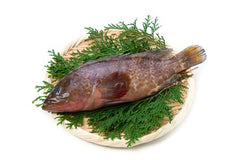 Grouper (high Acidic, avoid like the plague) - High mercury levels in these giant fish have caused EDF to issue a consumption advisory. Groupers can live to be 40 but only reproduce over a short amount of time, making them vulnerable to overfishing.
Grouper (high Acidic, avoid like the plague) - High mercury levels in these giant fish have caused EDF to issue a consumption advisory. Groupers can live to be 40 but only reproduce over a short amount of time, making them vulnerable to overfishing. -
Shark (high Acidic) - Shark meat can be terribly unhealthy. According to a CNN report from nearly 20 years ago, the mercury levels in sharks can cause coordination loss, blindness, and even death. Scientists think that sharks accumulate mercury in their body because they eat many smaller fish. In addition, they are endangered.
-
Mackerel (Spanish, king, gulf) (moderate Acidic) – High amounts of methyl mercury
-
Blue fish (moderate Acidic) – High amounts of mercury
-
Chilean Sea bass (high Acidic) – Slow-growing and prized for its buttery meat, Chilean sea bass has been fished to near depletion in its native cold Antarctic waters. The EDF has issued a consumption advisory for Chilean sea bass due to high mercury levels: adults should eat no more than two meals per month and children aged 12 and younger should eat it no more than once a month.
-
Farmed Salmon or Atlantic Salmon (mild Acidic) - Most farmed salmon (and all salmon labeled "Atlantic salmon" is farmed) are raised in tightly packed, open-net pens often rife with parasites and diseases that threaten the wild salmon trying to swim by to their ancestral spawning waters. Farmed salmon are fed fishmeal, given antibiotics to combat diseases and have levels of PCBs high enough to rate a health advisory from EDF.
Fish with Some Mercury (Eat no more than twice per month):
-
Tuna (big eye, Ahi, canned, Yellowfin, white albacore) (mild Acidic) – Tuna gets a bad rap, more than it should. Tuna has a high amount of selenium, which helps lower its mercury amounts, so it’s not as bad as you hear about.
Fish Low in Mercury:
-
Mahi-mahi (mild Acidic)
-
White fish like cod (mild Acidic)
-
Skate (mild Acidic)
-
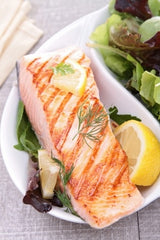 Herring (mild Acidic)
Herring (mild Acidic) -
Halibut (mild Acidic)
-
Haddock (mild Acidic)
-
Flounder (mild Acidic)
-
Scallops (moderate Acidic)
-
Sole (mild Acidic)
-
Anchovy (mild Alkaline)
-
Pacific or Alaskan salmon (best and mild Alkaline)
-
Sardines (best and mild Alkaline)
-
Trout (best and mild Alkaline)
So if you’re going to eat fish, now you are crystal clear on which are the BEST fish to eat.
Always use my good/better/best practice when it comes to eating fish. When you’re eating out at a restaurant, always ask your waiter where the fish is sourced from. If they can’t give you a clear answer RIGHT AWAY, then I most likely wouldn’t be eating fish there.
One way to remember which fish to avoid and which to enjoy is “smaller is better.” In general, small fish like sardines are lower in mercury than large fish like swordfish and tuna.
Now that doesn’t mean you can go to the store and just pick out any piece of salmon and assume you’re doing the best thing for your health.
It’s really key that you choose wild-caught, sustainable fish from that low-mercury list. Farmed fish have fewer healthy fats, so they aren’t as good for you, and they contribute to pollution and contaminated fish populations, so they aren’t as good for the fish or the earth either.
A great place to source clean, sustainable fish is www.vitalchoice.com.
 For more foods to enjoy and foods to avoid, get the free AlkaMind Ultimate Alkaline/Acid Food Chart. It lists every food you can think of, and it’s a handy cheat sheet at the grocery store or anywhere you’re planning your next meal.
For more foods to enjoy and foods to avoid, get the free AlkaMind Ultimate Alkaline/Acid Food Chart. It lists every food you can think of, and it’s a handy cheat sheet at the grocery store or anywhere you’re planning your next meal.
 Skip to content
Skip to content



 Grouper (high Acidic, avoid like the plague) - High mercury levels in these giant fish have caused EDF to issue a consumption advisory. Groupers can live to be 40 but only reproduce over a short amount of time, making them vulnerable to overfishing.
Grouper (high Acidic, avoid like the plague) - High mercury levels in these giant fish have caused EDF to issue a consumption advisory. Groupers can live to be 40 but only reproduce over a short amount of time, making them vulnerable to overfishing.

